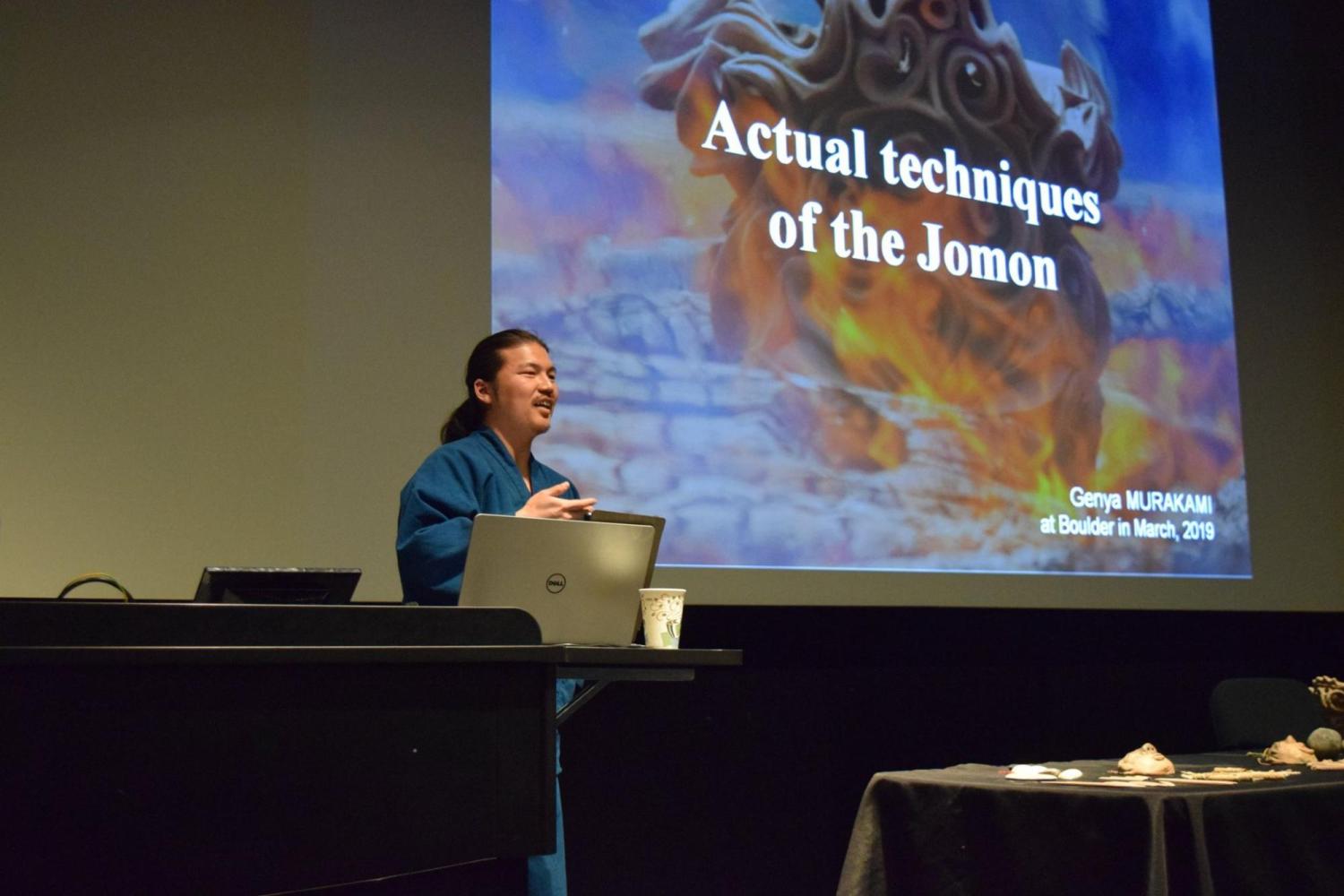The Rhythm and Flow of Nature: Artists from Japan Shared the Spirit of Ancient Jōmon Pottery with Boulder
Jōmon pottery sheds light on the mystery of prehistoric Japan. Literally meaning cord-marking pottery, this is the most ancient type of pottery in Japan which dates from 14,500 to 300 BCE. Jōmon people (Neolithic hunter-gatherers) created pottery for a wide variety of uses, decorated with abstract and symbolic forms, embodying the spirit of living with nature in harmony. At the heart of their creation is the belief in the value of connecting with the Earth and the appreciation of nature, which still occupies the thoughts of Japanese people today. This interdisciplinary event was presented by the Center for Asian Studies and the Department of Art and Art History at CU Boulder. Three contemporary artists, Ifūrai, Genya Murakami and Ryūjiro Oyabu, shared the ideas, techniques, and significance of Jōmon pottery with the Boulder community on March 19th, 2019.
Ifūrai began with a general introduction of the Jōmon spirit, which was followed by Genya’s demonstration of Jōmon pottery production techniques. Ryūjiro then reinterpreted the Jōmon spirit in contemporary life. For Ifūrai, the Jōmon spirit codifies the energy of nature, including the power of the sun, fire, water, and wind—all of which brings new life. Jōmon pottery is made in large open fires by the efforts of many, which is a ritual experience that contributes to community-building. Genya Murakami continued by showing the tools, techniques, and the tactile process of making Jōmon pottery. Ryūjiro Oyabu then made the connection between the Jōmon spirit and contemporary life. Starting with a demonstration of how much a small strand of rope can do, Ryūjiro creatively reinterpreted the techniques and meanings of Jōmon pottery; one of his works was a projection of a digital flame onto the Jōmon pottery, which challenged the boundaries between the tangible and the formless, the visible and the invisible, thus inviting viewers to reflect on the ethereal flow of energy in life. Through the medium of clay, these Japanese artists inspired the Boulder community with aesthetic ways of connecting with nature.
The CU Boulder faculty and students in attendance were excited to learn about different traditions of ceramics and deepen their understanding of Japanese culture. This is the first collaboration of its kind in recent years between the Center for Asian Studies and the Art and Art History Department. It is crucial for the understanding of interdisciplinary topics for the CU community, and especially the ceramics program (ranked top 5 nationally). This talk provided a rare opportunity for the faculty and students to exchange ideas with Japanese artists. For students in Japanese studies, it prompted them to reflect on Japanese culture and history through Neolithic material culture, which is all that remains of this period in Japanese history. After the talk, the audience was invited to join the artists at the podium to examine the tools, touch the material, and converse with the speakers. In feedback from the audience, the general sentiment was positive, and that they would like to see more lectures presented by East Asian artists in Boulder.


